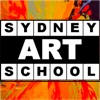How We Structure Our Art Courses & Why
Sydney Art School Course Framework and Philosophy
At Sydney Art School 0ur goal is to nurture and develop the artistic talent and creativity of our students
We do not compromise the quality of the artistic instruction for school student artists because they are children. We view them as "artists in training" who need guidance, instruction and practice on specific aspects of art.
Each School Student Short Course is carefully structured to address the 3 fundamentals areas that are needed for the complete development of any skill, namely;
Do I Understand What to Do?
This part of the course provides the theoretical knowledge and historical context of the artistic skill being studied.
Can I Apply My Understanding to Practice?
This is the part of the course is where the student applies and develops the skill being taught. Techniques and practices across a broad spectrum of styles, subject matter and media.
Do I Enjoy What I am Doing?
How is the student artist "connected" with their work? Is there a message to the art that they are producing? The more a student enjoys and their art the faster will be the progress.
Each School Student Short Course is planned over a 5 week period. At the end of each course the student will create one major art work in addition to drawings and paintings produced during the weekly lessons.
Weekly Lesson Structure
Each weekly lesson will typically have the following components;
A Seeing Exercise - Instruction on how to "see" like an artist and a practical exercise to develop the skill.
A Drawing Exercise - Instruction on a drawing technique and practical exercise.
A Painting Exercise - Instruction on a painting technique and practical exercise
A Context Discussion - Discussion of the historical context relevant to the exercises
Supplementary Material
Personal review with the tutor
This is best illustrated in the abbreviated sample lesson plan;
Sample Lesson Plan 1.
Seeing Exercise - Positive & Negative Spaces
Show some paintings by well known artists (e.g. Van Gogh - Still Life)
Explain concept of negative space. Ask students to identify and draw them.
Drawing Exercise - Composition
From the example painting discuss the elements of the composition.
Students sketch the painting varying the composition e.g. moving the height of the table or size of the subject.
Observe, understand & discuss the impact of the changes - works/what doesn't work and why.
Painting Exercise
Explain how to mix colours to match the colour used in the painting.
Explain brush stroke technique used by the artists.
Student mix colours and use same brush stroke technique to create a reproduction of the painting.
Context Discussion
Van Gogh Biography
Supplementary Material
Successful Drawing - Chapter 1 - Available on Website
1 on 1 Review with Tutor
Discuss with each student how they are feeling about their skill development and the subject matter. How would the student change the composition of the painting to match their own artistic perspective?
Other Educational Practices
Group Sessions Accelerate Learning
Small group sessions are a particularly effective way to accelerate learning. This is because in a group setting the tutor can point out when a particular student does something well (for example a drawing technique such as shading) or how to overcome a certain challenge (for example how to mix paints to get a certain colour). In this way many learning experiences are shared by the whole group.
In addition school students in particular learn by "modeling" or learning from others how they do things. A group setting provides many opportunities for students to "model" techniques used by their peers as well as by the tutor. The "accelerated group learning effect" works best in group sizes group sizes between 6-12 students.
Development of Professional Studio Practices and Working at an Easel
An important part of the development of a student artist is developing professional practices on how to use the "tools of the trade". At Sydney Art School the students work in professional studio facilities using the same equipment as provided to our adult students.
One important aspect is learning how to work at an easel rather than on a table. We encourage our students to work at an easel for drawing and painting exercises. Although this may feel somewhat difficult at first - it is a fundamental skill for any artist.
Other professional practices taught include how to lay out the work area, how to present the work, and how maintain and clean brushes & palettes.
